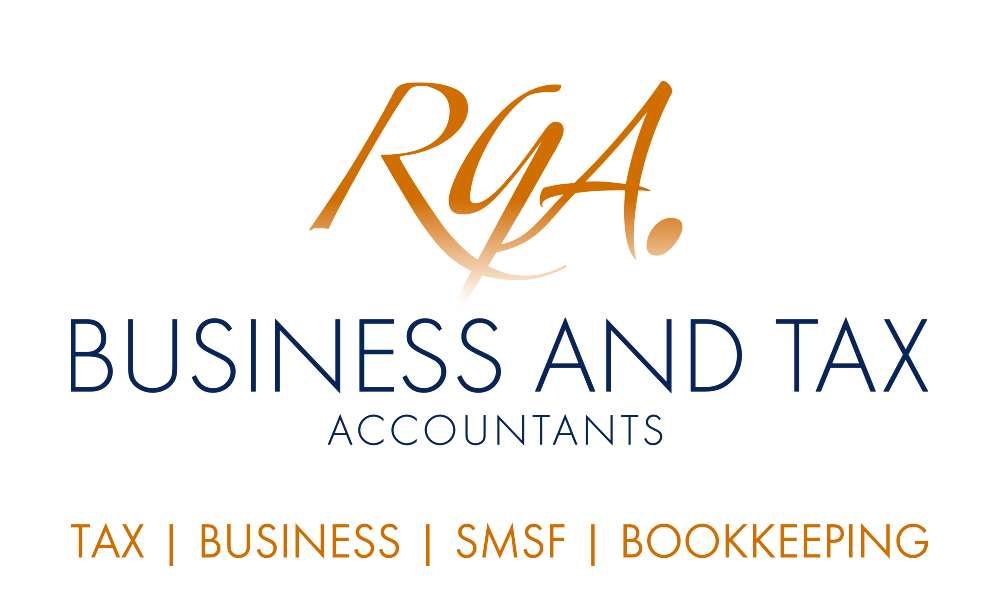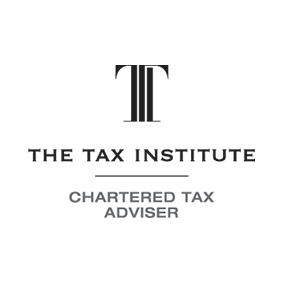October 2025 Tax Newsletter

Welcome to our October 2025 newsletter—packed with key tax deadlines, updates, and tips to help you stay compliant and informed.
Employees incorrectly treated as independent contractors
The ATO is warning businesses that if they incorrectly treat an employee as an independent contractor, then they risk receiving penalties and charges, including:
- PAYG withholding penalty for failing to deduct tax from worker payments and send it to the ATO;
- Super guarantee charge ('SGC'), which is more than the super that would have been paid if the worker was classified correctly. SGC consists of a super guarantee shortfall amount, nominal interest, and an administration fee; and
- Additional SG penalties, including a penalty amount of up to 200% of the SGC.
'Sham contracting' may also contravene the Fair Work Act 2009. Courts can impose penalties against a business or person that incorrectly informs an employee that they are an independent contractor.
Reminder of September Quarter Superannuation Guarantee ('SG')
Employers are reminded that employee super contributions for the quarter ending 30 September 2025 must be received by the relevant super funds by Tuesday, 28 October 2025. If the correct amount of SG is not paid by an employer on time, they will be liable to pay the SG charge, which (as noted above) includes a penalty and interest component.
Correctly dealing with rental property repairs
Taxpayers who have had work done on their rental property should ensure the expense is categorised correctly to avoid errors when completing their tax return.
A deduction for 'repairs and maintenance' expenses can be claimed for work done to remedy, or prevent defects, damage or deterioration from using the property to earn income. These expenses can be claimed in the year they were incurred.
However, some 'capital' expenditure may not be immediately deductible, such as for 'initial repairs', 'capital works', 'improvements' and depreciating assets.
Initial repairs include fixing any pre-existing damage or deterioration that existed at the time of purchasing the property, even if the damage or deterioration was unknown to the taxpayer at the time of purchase.
Initial repairs are treated as part of the acquisition cost and included in the cost base of the property for CGT purposes, unless they are capital works or depreciating assets.
Capital works are structural improvements, alterations and extensions to the property, and can generally be claimed at 2.5% over 40 years.
Capital works deductions can only be claimed after the work has been completed, regardless of when the taxpayer pays the deposit and instalments.
Improvements or renovations that are structural are also capital works. Work that goes beyond remedying defects, damage or deterioration that improves the function of the property is regarded as an improvement.
Repairs to an 'entirety' are capital and cannot be claimed as repairs. Repairs to an entirety generally involve the replacement or reconstruction of something separately identifiable as a capital item.
Depreciating assets are treated as follows:
- Deductions for 'new' assets must generally be claimed over time according to their effective life.
- Second-hand depreciating assets generally cannot be deducted.
Tips to help sole trader clients
The ATO is seeing sole traders make mistakes in the following areas:
- not reporting all income — this includes income earned outside their business (like a 'side hustle'), cash jobs, or payments in-kind/barter deals;
- overclaiming expenses — this includes claiming the portion of an expense related to personal use, or overstating the cost of goods sold and other business expenses;
- calculating business losses;
- incorrectly claiming and offsetting losses from non-commercial business activities against other income sources;
- misreporting personal services income ('PSI') to gain tax benefits;
- not registering for GST if they are in the taxi or ride-sourcing industry, or when they reach the GST threshold; and
- not keeping accurate and complete records.
If you need assistance with any of the above, please contact our office.
ATO warning regarding private use of work vehicles and FBT
Employers that supply work vehicles to their employees need to check how the work vehicles are used and whether any exemptions apply to determine if they attract fringe benefits tax ('FBT').
FBT generally applies when a work vehicle is made available for private use, even if it is not actually used. Private use includes any travel not directly related to the employee's job.
Exemptions may apply depending on the vehicle's specifications and the nature of the private use.
The most common issues the ATO sees include the following:
- incorrectly treating private use as business use;
- assuming dual cab utes are exempt from FBT — exemptions only apply if the vehicle is eligible for the specific FBT exemption and private use is limited;
- incorrectly classifying vehicles;
- poor record keeping that does not support the claims or the FBT calculations made; and
- not reporting or paying on time.
ART dismisses argument that medical expenses were deductible
In a recent decision, the Administrative Review Tribunal ('ART') held that a taxpayer could not claim a tax deduction for medical expenses incurred by him in relation to his total and permanent disability pension.
The taxpayer had been terminated from his employment due to total and permanent disablement ('TPD'). For the 2024 income year, his only income was a TPD pension.
The taxpayer wanted to claim a deduction for medical expenses to be incurred, estimated to be approximately $100,000 in the 2024 income year.
The ART agreed with the ATO that the medical expenses were not deductible. The ART noted in this regard that the medical expenses were "incurred by (the taxpayer) to better live with his medical condition, not incurred 'in' gaining or producing the TPD pension." That is, "the occasion of the Medical Expenses is to assist (the taxpayer) with his medical condition, not to gain or maintain his eligibility to the TPD pension."
The ART also did not accept the taxpayer's argument that the medical expenses were not private or domestic in nature, as they were essentially personal in character.
Trust Resolutions – Why Timing and Evidence Matter
A recent decision of the Administrative Review Tribunal (Goldenville Family Trust v Commissioner of Taxation [2025]) highlights the importance of documentation and evidence when it comes to tax planning and the consequences of not getting this right.
The case involved a family trust which generated significant amounts of income. For the 2015, 2016 and 2017 income years, the trustee attempted to distribute most of the income to a non-resident beneficiary. As the trustee believed the income was classified as interest (this was challenged successfully by the ATO), the trustee assumed that the income would be subject to a final Australian tax at 10%, under the non-resident withholding rules. This was clearly more favourable than having the income taxed in the hands of Australian resident beneficiaries at higher marginal rates.
However, the ATO argued that the distribution resolutions were invalid and the Tribunal agreed. Why? The main reason was a lack of evidence to prove that the distribution decisions were made before the end of the relevant financial years.
While there were some documents that were purportedly dated and signed “30 June”, the Tribunal wasn’t convinced that the decisions were actually made before year-end and it was more likely that these documents were prepared on a retrospective basis. The evidence suggested the decisions were probably made many months after year-end, once the accountant had finalised the financial statements.
The outcome was that default beneficiaries (all Australian residents) were taxed on the income at higher rates.
Timing of trust resolution decisions is critical
For a trust distribution to be effective for tax purposes, trustees must reach a decision on how income will be allocated by 30 June each year (or sometimes earlier, depending on the trust deed). It might be OK to prepare the formal paperwork later, but those documents must reflect a genuine decision made before year-end.
For example, let’s say a trust has a corporate trustee with multiple directors. The directors meet at a particular location on 29 June and make formal decisions about how the income of the trust will be appointed to beneficiaries for that year. Someone keeps handwritten notes of the meeting and the decisions that are made. On 5 July the minutes are typed up and signed. The ATO indicates that this will normally be acceptable, but subject to any specific requirements in the trust deed.
If the ATO believes the decision was made after 30 June (or documents were backdated), the resolution can be declared invalid. In that case, you might find that one or more default beneficiaries are taxed on the taxable income of the trust or the trustee is taxed at penalty rates. This could be an unexpected and costly tax outcome and could also lead to other problems in terms of who is really entitled to the cash.
Broader lessons – it’s not just about trust distributions
The timing issue is not confined just to trust distribution situations. Other areas of the tax system also turn on when a decision or agreement is actually made, not just when it is eventually recorded.
For example, if a private company makes a loan to a shareholder in a given year, that loan must be repaid in full or placed under a complying Division 7A loan agreement by the earlier of the due date or lodgement date of the company’s tax return for the year of the loan. If not, a deemed unfranked dividend can be triggered for tax purposes.
If a complying loan agreement is put in place then minimum annual repayments normally need to be made to avoid deemed dividends being recognised for tax purposes
A common way to deal with loan repayments is by using a set-off arrangement involving dividends that have been declared by the company. However, in order for the set-off arrangement to be valid there are a number of steps that need to be followed before the relevant deadline. The ATO will typically want to see evidence which proves:
- When the dividend was declared; and
- When the parties agreed to set-off the dividend against the loan balance.
If there isn’t sufficient evidence to prove that these steps were taken by the relevant deadline then you might find that there is a taxable unfranked deemed dividend that needs to be recognised by the borrower in their tax return.
Documenting decisions before year-end
The key lesson from cases like Goldenville is that documentation shouldn’t be an afterthought — lack of contemporaneous documentation can fundamentally change the tax outcome. What normally matters most is when the relevant decision is actually made, not when the paperwork is drafted.
In practice, this often means:
- Check relevant deadlines and what needs to occur before that deadline.
- If a decision needs to be made before the deadline, ensure that a formal process is followed to do this. For example, determine whether certain individuals need to hold a meeting or whether a circular resolution could be used.
- Produce contemporaneous evidence of the fact that the decision has been made. You might consider sending a brief email to your accountant or lawyer explaining the decision that has been made before the relevant deadline , basically providing a time-stamped record of the decision.
- Finalise paperwork: formal minutes of meetings can sometimes be prepared after year-end, but they must accurately reflect the earlier decision.
Thinking carefully about timing — and building a habit of producing clear evidence of decisions as they are made — is often the difference between a tax planning strategy working as intended and an expensive dispute with the ATO.
ATO Interest Charges Are No Longer Deductible – What You Can Do
Leaving debts outstanding with the ATO is now more expensive for many taxpayers.
As we explained in the July edition of our newsletter, general interest charge (GIC) and shortfall interest charge (SIC) imposed by the ATO is no longer tax-deductible from 1 July 2025. This applies regardless of whether the underlying tax debt relates to past or future income years.
With GIC currently at 11.17%, this is now one of the most expensive forms of finance in the market — and unlike in the past, you won’t get a deduction to offset the cost. For many taxpayers, this makes relying on an ATO payment plan a costly strategy.
Refinancing ATO debt
Businesses can sometimes refinance tax debts with a bank or other lender. Unlike GIC and SIC amounts, interest on these loans might be deductible for tax purposes, provided the borrowing is connected to business activities.
While tax debts will sometimes relate to income tax or CGT liabilities, remember that interest could also be deductible where money is borrowed to pay other tax debts relating to a business, such as:
- GST
- PAYG instalments
- PAYG withholding for employees
- FBT
However, before taking any action to refinance ATO debt it is important to carefully consider whether you will be able to deduct the interest expenses or not.
Individuals
If you are an individual with a tax debt, the treatment of interest expenses incurred on a loan used to pay that tax debt really depends on the extent to which the tax debt arose from a business activity:
- Sole traders: If you are genuinely carrying on a business, interest on borrowings used to pay tax debts from that business is generally deductible.
- Employees or investors: If your tax debt relates to salary, wages, rental income, dividends, or other investment income, the interest is not deductible. Refinancing may still reduce overall interest costs depending on the interest rate on the new loan, but it won’t generate a tax deduction.
Example: Sam is a sole trader who runs a café. He borrows $30,000 to pay his tax debt, which arose entirely from his café profits. The interest should be fully deductible.
However, if Sam also earns salary or wages from a part-time job and some of his tax debt relates to the employment income, only a portion of the interest on the loan used to pay the tax debt would be deductible. If $20,000 of the tax debt relates to his business and $10,000 relates to employment activities, then only 2/3rds of the interest expenses would be deductible.
Companies and trusts
If a company or trust borrows to pay its own tax debts (income tax, GST, PAYG withholding, FBT), the interest will usually be deductible if it can be traced back to a debt that arose from carrying on a business.
However, if a director or beneficiary borrows money personally to cover those debts, the interest would not normally be deductible to them.
Partnerships
The position is more complex when it comes to partnership arrangements. If the borrowing is at the partnership level and it relates to a tax debt that arose from a business carried on by the partnership then the interest should normally be deductible. For example, this could include interest on money borrowed to pay business tax obligations such as GST or PAYG withholding amounts.
However, the ATO takes the view that if an individual who is a partner in a partnership borrows money personally to pay a tax debt relating to their share of the profits of the partnership, the interest isn’t deductible. The ATO treats this as a personal expense, even if the partnership is carrying on a business activity.
Practical takeaway
Leaving debts outstanding with the ATO is now more expensive than ever because GIC and SIC are no longer deductible.
Refinancing the tax debt with an external lender might provide you with a tax deduction and might also enable you to access lower interest rates.
The key is to distinguish between tax debts that relate to a business activity and other tax debts. For mixed situations, you may need to apportion the deduction.
If you’re unsure how this applies to you, talk to us before arranging finance. With the right strategy, you can manage tax debts more effectively and avoid costly surprises.
Government Review of Supermarket Unit Pricing: What It Could Mean for Your Business
The Federal Government recently wrapped up a consultation process on supermarket unit pricing. While the topic might sound like a purely consumer issue, it could have very real commercial impacts for businesses supplying into the grocery sector.
On 1 September 2025, Treasury opened consultation on strengthening the Retail Grocery Industry (Unit Pricing) Code of Conduct. Submissions closed just a few weeks later on 19 September 2025, marking the end of a very short opportunity for stakeholders to have their say.
A Quick Recap
Unit pricing is what allows shoppers to compare costs per standard measure (e.g. $/100g or $/litre) across different pack sizes and brands. Since 2009, large supermarkets have been required to display this information to help customers spot value. While compliance has been relatively low-cost and penalties limited, the Government’s review signals that much tighter rules could be on the way.
Why Now?
The ACCC’s recent supermarket inquiry highlighted that while unit pricing helps, there are still gaps. The big concern is shrinkflation—when pack sizes quietly reduce while prices remain the same or higher. With cost-of-living pressures dominating headlines, the Government is looking at clearer, fairer pricing to rebuild consumer trust.
What Might Change?
Proposals considered in the consultation paper include:
- Shrinkflation alerts – supermarkets may need to flag when a product becomes smaller without a matching price cut.
- Clearer displays – larger, more prominent unit prices both in-store and online.
- Wider coverage – expanding the rules beyond major supermarkets to smaller retailers and online sellers.
- Standardised measures – eliminating confusing “per roll” vs “per sheet” comparisons.
- Civil penalties – introducing fines for non-compliance.
The Commercial Impact
For suppliers, packaging decisions could come under closer scrutiny. For retailers, costs might arise from updating shelf labels, software, or e-commerce systems. But there are also opportunities: businesses that embrace transparency could build loyalty and stand out in a competitive market.
What You Should Do
Now that the consultation period has closed, Treasury will consider submissions and the Government is expected to announce its response later this year.
Businesses in food, grocery, and household goods should stay alert—the final shape of the rules could affect pricing, packaging, and compliance obligations across the sector.
We can help you model potential compliance costs, assess financial impacts, and prepare for upcoming regulatory change. Reach out to discuss how this review might affect your business.
Accessing superannuation funds for medical treatment or financial hardship
Superannuation is one of the largest assets for many Australians and offers significant tax advantages, however, strict rules apply to when it can be accessed. While super is most commonly accessed at retirement, death or disability, there are limited situations where earlier access may be possible.
Early access is generally available in two situations:
- Financial hardship – where you are receiving a qualifying Centrelink/DVA payment for a minimum period and cannot meet immediate living expenses.
- Compassionate grounds – Funding for certain specific scenarios which include preventing a mortgage foreclosure or meeting medical expenses for a life-threatening injury or illness or to alleviate severe chronic pain.
Compassionate grounds access requires an application to be made to the ATO which needs to be accompanied by relevant medical certificates or mortgage information. If approved the ATO will provide instructions to the individual’s superannuation fund to release an amount to cover the expense. We have included some ATO links with more detailed information on compassionate grounds and financial hardship below.
When accessing superannuation under compassionate grounds you would usually collect the relevant supporting documentation and personally make the application for approval using your MyGov account. It has come to the ATO’s attention that there may be medical and dental providers exploiting this access and assisting super fund members to access amounts for cosmetic reasons (you may have even seen advertisements pop up on your social media showing people with a new sparkling smile – and a lower super balance).
The ATO’s concerns are discussed in Separating fact from fiction on accessing your super early.
Superannuation fund members and SMSF trustees should be aware that there can be substantial penalties applied when super is accessed outside of the legislated conditions of release. You should never provide another party with access to your MyGov login or allow a third party to make applications on your behalf. Penalties may also apply for making false declarations.
Related links
Accessing superannuation under compassionate grounds
Accessing superannuation due to financial hardship
Should you have any questions or concerns relating to proposed access to your superannuation please reach out to us.
Need Help with your Business, Bookkeeping, Tax or SMSF requirements?
If you would like a little help, please get in touch with us for assistance. We can help with your business, bookkeeping, tax and SMSF requirements. To book an appointment, use our online booking system, give us a call on 07 3289 1700, or email us at reception@rgaaccounting.com.au.We look forward to assisting you this tax season!
Please also note that many of the comments in this publication are general in nature and anyone intending to apply the information to practical circumstances should seek professional advice to independently verify their interpretation and the information’s applicability to their particular circumstances. Should you have any further questions, please get in touch with us for assistance with your SMSF, business, bookkeeping and tax requirements. All rights reserved. Brought to you by RGA Business and Tax Accountants. Liability Limited by a scheme approved under Professional Standards Legislation.









